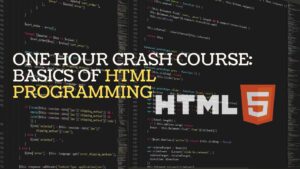Welcome to the world of programming! If you’re just starting your journey, JavaScript is a fantastic language to begin with. In this tutorial, we will dive into one of the fundamental concepts of JavaScript programming – comments. Comments are not just plain text, they play a crucial role in making your code more readable and maintainable. By the end of this tutorial, you will have a solid understanding of JavaScript comments and how to use them effectively.

Table of Contents
JavaScript Comments – What are they?
In JavaScript, comments are textual annotations within your code that are completely ignored by the JavaScript engine. They are used for various purposes, such as explaining the code, providing context, and temporarily disabling code. Comments are essential for code readability and collaboration with other developers.
There are two primary types of comments in JavaScript:
1. Single-line Comments
Single-line comments are used for writing brief comments on a single line. They are preceded by //. The JavaScript engine ignores everything from // to the end of the line.
Example:
// This is a single-line comment
console.log("Hello, World!"); // This comment is for the next line of code2. Multi-line Comments
Multi-line comments are used to write comments that span multiple lines. They are enclosed between /* and */. Anything between these delimiters is treated as a comment.
Example:
/* This is a multi-line comment.
You can write comments on multiple lines here.
This comment can span as many lines as needed.
*/
console.log("Hello, World!");Why Use Comments?
Keywords: Code documentation, code readability, collaboration, debugging, best practices
Comments are a vital part of writing clean and maintainable code. Here’s why you should use them:
- Documentation: Comments provide information about your code’s purpose, how it works, and its expected input and output. This helps you and other developers understand the code.
- Readability: Well-placed comments make your code easier to understand, even for someone who didn’t write it. This is especially important when you revisit your code after some time.
- Collaboration: When working on a team project, comments can facilitate communication between team members. They can explain your code’s logic and help others work with it more effectively.
- Debugging: Comments can be used to temporarily disable code for debugging without removing it. This allows you to isolate and fix issues in your code more easily.
Using Comments Effectively
Keywords: Commenting best practices, commenting guidelines, commenting style
To use comments effectively in your JavaScript code, follow these best practices:
- Be Clear and Concise: Write comments that are easy to understand. Use plain language and avoid jargon.
- Explain the Why, Not the What: Don’t just repeat what the code does; explain why it does it. This provides context and helps readers understand your thought process.
- Update Comments Regularly: Keep your comments up to date. If you change the code, make sure to update the corresponding comments.
- Avoid Overcommenting: While comments are essential, avoid excessive commenting. Your code should be self-explanatory, and comments should complement, not replace, good code.
- Use Consistent Comment Style: Choose a comment style (single-line or multi-line) and stick with it consistently throughout your codebase.
Sample Code with Comments
Let’s look at some sample code snippets with comments to illustrate how comments can be used effectively:
1. Single-line Comment Example
// Calculate the sum of two numbers
const num1 = 5;
const num2 = 10;
const sum = num1 + num2;
console.log("The sum is: " + sum); // Output the resultIn this example, the comment provides context for the calculation and explains the purpose of the console.log statement.
2. Multi-line Comment Example
/*
Function to calculate the area of a rectangle.
Formula: Area = length * width
*/
function calculateRectangleArea(length, width) {
return length * width;
}
const area = calculateRectangleArea(5, 8);
console.log("The area of the rectangle is: " + area);Here, a multi-line comment documents the purpose and formula used in the calculateRectangleArea function.
Conclusion
JavaScript comments are a valuable tool for enhancing your code’s readability, maintainability, and collaboration. By following best practices and using comments effectively, you can make your code more accessible and understandable to yourself and others.
In this tutorial, we’ve covered the basics of JavaScript comments, their types, and best practices. You are now equipped to add comments to your JavaScript code and improve its quality.
Keep practicing, and don’t forget to use comments to document your code as you continue your journey in JavaScript programming. Happy coding!




